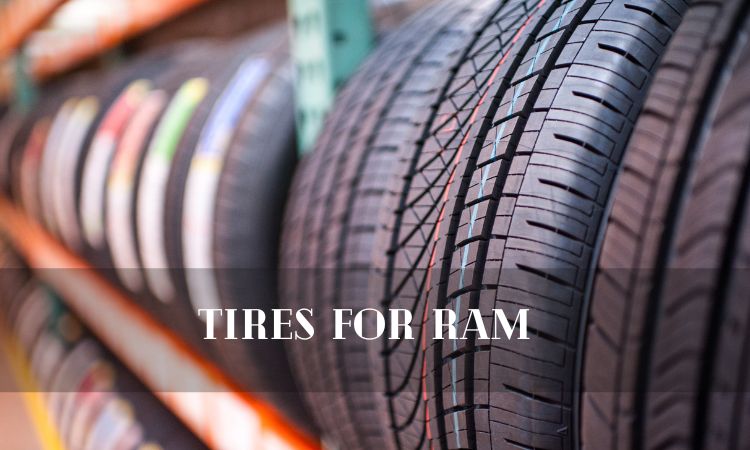Green Tire Technologies: Innovations and Benefits
In today's fast-paced world, the need for sustainable and environmentally-friendly solutions is more pressing than ever. Green tire technologies have emerged as a promising innovation in the automotive industry, offering a range of benefits that go beyond improved fuel efficiency.
From reducing carbon emissions to minimizing waste generation, these tire technologies are paving the way for a greener and more sustainable future.
In this article, we will delve into the innovations and benefits of green tire technologies, exploring their potential to transform the way we drive and protect our planet.
Key Takeaways
- Green tire technologies aim to shift towards sustainable manufacturing processes and materials, reducing the carbon footprint in tire production.
- The use of renewable tire materials, such as natural rubber, soybean oil, and dandelion rubber, helps minimize waste generation and improve tread wear and longevity.
- Advanced materials used in green tires, derived from renewable sources, contribute to reducing environmental impact and conserving biodiversity.
- Green tires integrate innovative designs and materials to improve fuel efficiency, minimize energy losses, and reduce carbon emissions, thus promoting eco-friendly transportation.
The Evolution of Green Tire Technologies
Examining the advancements made in the development of eco-friendly tire technologies, we can observe a significant shift towards sustainable manufacturing processes and materials. Environmental scientists and engineers have been at the forefront of this evolution, utilizing scientific methods and data analysis to evaluate the effectiveness and potential impacts of green tire technologies on the environment.
One key area of focus in the development of eco-friendly tires is the use of renewable tire materials. Traditional tires are typically made from petroleum-based compounds, which contribute to carbon emissions and environmental pollution. However, advancements in technology have led to the emergence of eco-friendly tire compounds derived from renewable sources such as natural rubber, soybean oil, and dandelion rubber. These materials not only reduce the carbon footprint associated with tire production but also offer improved performance and durability.
In addition to the use of renewable materials, green tire technologies also prioritize sustainability and ecosystem health. By reducing rolling resistance, eco-friendly tires can improve fuel efficiency, resulting in reduced carbon emissions and lower fuel consumption. Furthermore, these tires minimize waste generation through improved tread wear and increased longevity.
Environmental scientists and engineers assess the ecological impacts of these technologies, ensuring their compatibility with biodiversity conservation. They recognize the importance of long-term environmental implications and strive to develop eco-friendly tire technologies that promote sustainability and the overall health of ecosystems. Through their objective and evidence-based approach, they aim to create a greener and more sustainable future for the tire industry.
Advanced Materials Used in Green Tires
Advanced materials used in green tires play a crucial role in enhancing sustainability and improving fuel efficiency. These materials, such as sustainable rubber alternatives, are designed to reduce the environmental impact of tire production and usage.
Sustainable Rubber Alternatives
We should explore sustainable rubber alternatives as they offer promising solutions for reducing the environmental impact of tire manufacturing. One such alternative is the use of bio-based materials, which are derived from renewable sources such as plant-based materials. These materials can be used in the production of tire components, replacing traditional petroleum-based rubber. By utilizing bio-based materials, we can reduce our dependence on fossil fuels and decrease carbon emissions associated with tire manufacturing.
In addition to bio-based materials, recycling initiatives also play a crucial role in the sustainability of tire production. Through recycling, used tires can be transformed into new products or used as secondary raw materials. This reduces waste generation and conserves valuable resources. Furthermore, recycling initiatives can help minimize the environmental pollution caused by improper tire disposal.
By incorporating these sustainable practices into tire manufacturing, we can achieve significant environmental benefits. Not only can we reduce carbon emissions and improve fuel efficiency, but we can also contribute to the conservation of biodiversity and the overall health of ecosystems.
It is essential to evaluate the long-term environmental implications of green tire technologies, considering their potential impacts and compatibility with biodiversity conservation. Through an evidence-based approach, we can make informed decisions that promote sustainability and the well-being of our planet.
Improved Fuel Efficiency
The implementation of innovative materials and the integration of aerodynamic designs in green tires contribute to improved fuel efficiency in vehicles. Green tire technologies, such as low rolling resistance compounds and advanced tread designs, aim to reduce energy losses and maximize traction while minimizing fuel consumption.
Environmental scientists and engineers analyze these technologies using scientific methods and data analysis to evaluate their effectiveness and potential impacts on the environment. They consider the long-term environmental implications of green tire technologies, including their ability to reduce carbon emissions and improve fuel efficiency, leading to eco-friendly transportation.
Additionally, these professionals emphasize sustainability and ecosystem health, evaluating the ecological impacts of green tire technologies and their compatibility with biodiversity conservation. The development and adoption of green tire technologies play a crucial role in achieving reduced carbon emissions and promoting a more sustainable future in transportation.
Innovations in Tire Manufacturing Processes
Streamlining production techniques has led to significant improvements in efficiency and sustainability within tire manufacturing processes. This has paved the way for the development of innovative green tire technologies that not only benefit the environment but also enhance overall performance and safety.
Here are three key advancements in eco-friendly tire manufacturing:
- Smart Tire Technology: Incorporating sensors and data analytics into tire design and manufacturing processes allows for real-time monitoring of tire pressure, temperature, and tread wear. This technology enables drivers to optimize tire performance, improve fuel efficiency, and reduce carbon emissions. Additionally, it enhances safety by providing early warnings for potential tire failures.
- Sustainable Materials: Eco-friendly tire manufacturing focuses on using renewable and recycled materials in tire production. For instance, bio-based materials, such as natural rubber derived from sustainable sources, help reduce the reliance on fossil fuels and minimize carbon footprint. Moreover, utilizing recycled materials, like shredded tires, in tire manufacturing reduces waste generation and promotes circular economy principles.
- Low Rolling Resistance: Green tire technologies aim to minimize energy loss due to rolling resistance. By incorporating advanced tread designs, tire manufacturers can reduce friction between the tire and the road, resulting in improved fuel efficiency and reduced greenhouse gas emissions. This not only benefits the environment but also contributes to cost savings for vehicle owners.
Benefits of Low Rolling Resistance Tires
One of the key benefits of low rolling resistance tires is their ability to improve fuel efficiency and reduce greenhouse gas emissions.
Low rolling resistance tires are designed to minimize the energy lost as the tire rolls along the road surface. This reduced friction allows vehicles to use less energy to move, resulting in improved fuel efficiency and reduced carbon emissions.
Numerous studies have demonstrated the positive environmental impact of low rolling resistance tires. For example, a study conducted by the Environmental Protection Agency (EPA) found that these tires can reduce fuel consumption by up to 5%. This reduction in fuel consumption translates to lower carbon emissions, helping to mitigate climate change.
In addition to reducing carbon emissions, low rolling resistance tires can also increase vehicle range. By improving fuel efficiency, these tires allow vehicles to travel longer distances on a single tank of fuel or charge for electric vehicles. This increased range is particularly beneficial for electric vehicles, where extending the distance that can be traveled on a single charge is a crucial factor in their widespread adoption.
Overall, low rolling resistance tires play a significant role in promoting sustainability and ecosystem health. They contribute to the reduction of carbon emissions, improve fuel efficiency, and minimize waste generation.
As scientists and engineers, it is important to continue evaluating the effectiveness and potential impacts of green tire technologies on the environment, ensuring their compatibility with biodiversity conservation and long-term sustainability.
Environmental Impact Reduction With Green Tires
Implementing green tires in the automotive industry can lead to a significant reduction in environmental impact by minimizing waste generation and promoting sustainability. Green tire technologies, which incorporate eco-friendly manufacturing techniques and focus on reducing the carbon footprint, offer several environmental benefits.
- Reduced carbon emissions: Green tires are designed to have lower rolling resistance, which means less energy is required to move the vehicle, resulting in reduced fuel consumption and carbon emissions. This contributes to the overall goal of mitigating climate change by reducing greenhouse gas emissions.
- Improved fuel efficiency: The lower rolling resistance of green tires not only reduces carbon emissions but also improves fuel efficiency. This can result in cost savings for vehicle owners and decreased dependence on fossil fuels.
- Minimized waste generation: Green tire technologies aim to reduce waste generation during the manufacturing process. This involves using recycled materials and optimizing the use of raw materials, reducing the environmental impact associated with tire production.
By focusing on sustainability and ecosystem health, green tire technologies have the potential to revolutionize the automotive industry. However, it is important to carefully evaluate the long-term environmental implications of these technologies, including their compatibility with biodiversity conservation and their ecological impacts. Understanding the effectiveness and potential impacts of green tire technologies is crucial for ensuring a sustainable and eco-friendly future for the automotive industry.
Transition to the subsequent section:
Looking towards the future, advancements in green tire technologies continue to be made, paving the way for even more environmentally friendly and sustainable options in the automotive industry.
The Future of Green Tire Technologies
Several innovative advancements are expected to shape the future of green tire technologies, revolutionizing the automotive industry and further enhancing their environmental benefits. Smart tire technology, in particular, holds great promise in improving the overall sustainability and eco-friendliness of tire production and usage.
Smart tire technology refers to the integration of sensors and communication systems within tires to provide real-time data on tire pressure, temperature, and wear. This technology allows for proactive maintenance and optimization of tire performance, leading to improved fuel efficiency and reduced carbon emissions. By ensuring proper tire inflation and reducing rolling resistance, smart tires contribute to lower fuel consumption and greenhouse gas emissions.
In addition to their impact on fuel efficiency and emissions, green tire technologies also focus on eco-friendly tire production. This involves the use of sustainable materials, such as natural rubber sourced from responsibly managed plantations, and the adoption of environmentally friendly manufacturing processes. Eco-friendly tire production aims to minimize waste generation, reduce water and energy consumption, and ensure the responsible disposal or recycling of end-of-life tires.
Furthermore, environmental scientists and engineers evaluate the ecological impacts of green tire technologies to ensure their compatibility with biodiversity conservation. This includes assessing the potential impacts on ecosystems, such as habitat disruption or pollution during the tire production process. By considering the long-term environmental implications and adopting a sustainable approach, green tire technologies can contribute to a healthier and more sustainable future for the automotive industry.
Frequently Asked Questions
How Long Do Green Tires Typically Last Compared to Traditional Tires?
Green tires typically have a longer lifespan compared to traditional tires, thanks to advancements in their durability. This comparison is important for understanding the benefits of green tire technologies in terms of reducing waste and promoting sustainability.
Are There Any Specific Safety Concerns Associated With Green Tires?
Green tire safety is a crucial concern when considering the benefits of green tire technologies. Environmental impact is also a significant factor, as these technologies aim to reduce carbon emissions, improve fuel efficiency, and minimize waste generation, while ensuring compatibility with biodiversity conservation.
Do Green Tires Require Any Special Maintenance or Care?
Green tires require special maintenance and care to ensure optimal performance and longevity. Regular inspections for wear and tear, proper inflation, and alignment are necessary. Additionally, following manufacturer recommendations for rotation and storage will help maximize the lifespan of green tires.
Can Green Tires Be Used in All Types of Vehicles, Including Heavy-Duty Trucks and Suvs?
Yes, green tires can be used in all types of vehicles, including heavy-duty trucks and SUVs. These tires are designed to improve performance and fuel efficiency while reducing the environmental impact, making them suitable for various vehicle applications.
Are There Any Limitations or Drawbacks to Using Green Tires?
There may be limitations and drawbacks to using green tires. These could include issues related to their manufacturing process, such as increased energy consumption or the use of potentially harmful materials. Additionally, the environmental impact of green tires should be carefully assessed to ensure they truly contribute to sustainability and ecosystem health.
Conclusion
In conclusion, green tire technologies have revolutionized the tire industry by incorporating advanced materials and innovative manufacturing processes.
These low rolling resistance tires offer numerous benefits, such as improved fuel efficiency and reduced carbon emissions.
By reducing the environmental impact of tire production and usage, green tires contribute to the overall sustainability and health of ecosystems.
As the tire industry continues to evolve, it is crucial to prioritize the compatibility of these technologies with biodiversity conservation and long-term environmental sustainability.







